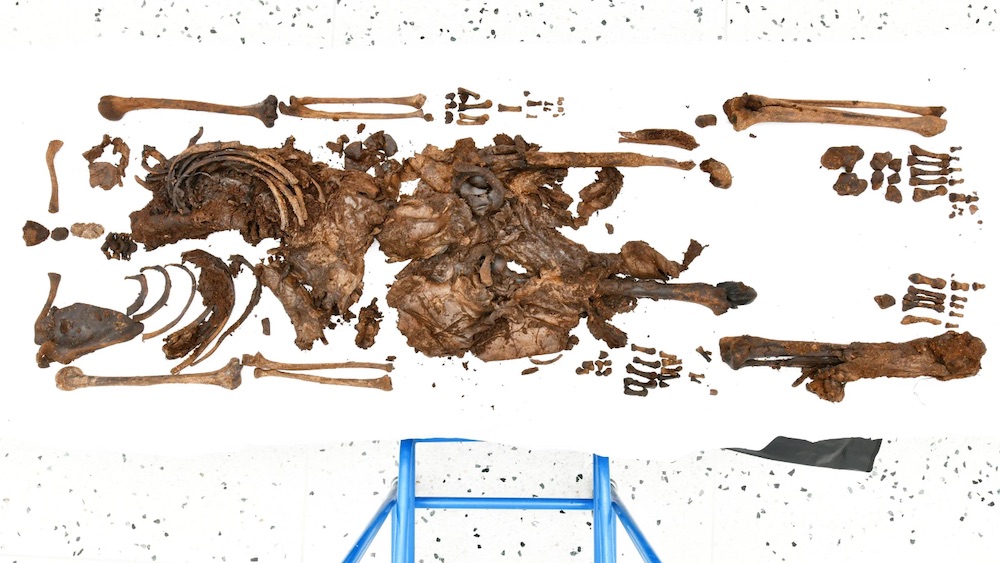2,000-year-old 'bog body' of teenager with missing skull discovered in Northern Ireland
The well-preserved skeleton still has portions of its fingernails and skin intact — however, its skull remains missing.

Archaeologists have uncovered a "bog body" in the U.K. that is between 2,000 and 2,500 years old.
The find was made after the police were alerted about the discovery of human bones in peatland near Bellaghy, a village in the central part of Northern Ireland, according to a statement by the Police Service of Northern Ireland.
"On initial examination, we couldn't be sure if the remains were ancient or the result of a more recent death," Nikki Deehan, a detective inspector with the Police Service, said in the statement.
"Therefore, we proceeded to excavate the body with full forensic considerations in a sensitive and professional manner," Deehan said. "This approach also ensures that any DNA evidence could be secured for any potential criminal investigation. Ultimately this wasn't the case in this instance."
Related: Scotland's 'bodies in the bog' traveled hundreds of miles to die in a toilet
Instead, authorities learned that they'd found a "bog body," human remains that are incredibly well-preserved thanks to being in places that contain low levels of oxygen with wet and spongy soils. Forensic anthropologists determined that the skeleton, whose bones were scattered across the peatland and were just reassembled, was that of a teenage boy who died sometime between the ages of 13 and 17.
While most of his bones were recovered, his skull remains missing and researchers are unsure if it was separated from his body before or after his death.
Get the world’s most fascinating discoveries delivered straight to your inbox.
More than 1,000 bog bodies, dating from the Stone Age to modern times, have been found in Europe over the centuries. While some bog bodies, like the well-preserved Tollund Man from Denmark, are the remains of sacrifice victims, others were likely the burials of deviants or executed criminals, or even the remains of accidental deaths, such as drownings, according to a 2023 study in the journal Antiquity. It's unclear how the teenager from Bellaghy met his end, however.
Due to the excellent preservation of the bog body, researchers were able to recover bits of skin, fingernails, toenails and "possibly a kidney," according to the statement.
"The well-preserved nature of the body meant radiocarbon dating could be used to ascertain the time of death," Deehan said. "The radiocarbon dates have placed the time of death between 2,000 [and] 2,500 years ago, approximately 500 B.C. This is the first time radiocarbon dating has been used on a bog body in Northern Ireland, and the only [bog body] to still exist, making this a truly unique archaeological discovery for Northern Ireland."
Authorities are transferring the remains to the National Museums Northern Ireland to conduct further investigations and determine how the boy died.
Jennifer Nalewicki is former Live Science staff writer and Salt Lake City-based journalist whose work has been featured in The New York Times, Smithsonian Magazine, Scientific American, Popular Mechanics and more. She covers several science topics from planet Earth to paleontology and archaeology to health and culture. Prior to freelancing, Jennifer held an Editor role at Time Inc. Jennifer has a bachelor's degree in Journalism from The University of Texas at Austin.


